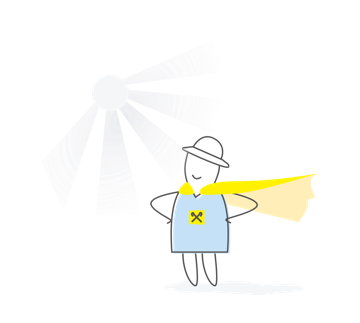Quarantine-independent. Gardening on the rise
Unlike many others, businesses aimed at gardeners, gardeners, gardeners, during quarantine, rose in the wake of popularity. All city dwellers who had the opportunity wanted to sit out forced isolation in the village or in the country. Accordingly, gardening goods entered the top 5 categories of products for which there is increased demand for the second month in a row.
This is not the first crisis in Ukraine proves: in addition to foodstuffs and urgent necessities, the types of businesses associated with hobbies and lifestyles demonstrate pleasant stability in demand. Among them, of course, those who built online sales in advance won. One of such examples of success was the nursery of ornamental plants "Green Eden" in the Kiev region. Its owner Natalia Dobrovolskaya shared the nuances of running this business with fellow entrepreneurs. After all, many are now thinking about new areas of work.
WHERE TO BEGIN
“The first thing to remember when starting such a business is that plants are not bricks, they must be loved and understood,” Natalya Dobrovolskaya begins her story. Lack of knowledge on agricultural technology can instantly nullify all attempts to sell plants. Therefore, an entrepreneur must either obtain basic agronomic skills himself or hire a person with relevant experience. The next step requires basic investment - in the selection and rental of land, the construction of a greenhouse. Or rent a ready-made greenhouse with heating. And also in the arrangement of a showroom or store where goods will be sold, development and content of the site.
The main current expenses are utilities, the purchase of seedlings, staff salaries, rent, taxes. Many gardening companies, in order to reduce the costs of plant care products and, accordingly, increase revenue, additionally sell garden tools, equipment and fertilizers.
COMMODITY ASSORTMENT
Next, you need to decide - for whom you grow your product. The assortment of plants will depend on who your customer is. For large supermarkets - there is only one assortment, if you work with landscape designers who prefer conifers and large trees, the set of plants will be different, as well as for trade with direct consumers, amateur gardeners. The so-called B2B (business for business) is developed abroad, when the company is responsible for only one of the stages - for example, someone grows only cluster seedlings and sells it to those who grow the next stage. In Ukraine, this approach is only just beginning to develop, most of the horticulture was originally designed for a full cycle of cultivation and sale to the end customer. Natalia Dobrovolskaya advises: you need to start with a small number of positions, and it is desirable that these plants are unpretentious.
The most common direction is the sale of popular unpretentious annual and perennial plants of average cost for private country houses. In this case, you will directly sell your plants to a person who wants to see them in his garden. And this is a human factor. Gardeners and flower growers say that this is the most difficult stage in the work. The fact that plants fall into the category of goods is not essential. Making beauty in the yard or in the garden is more of a hobby. Studies have shown that people make such purchases impulsively, most often after seeing a beautiful photo of a plant. But this is precisely what leads then to misunderstandings and conflicts.
“I was faced with the fact that a person drew in his head that a seedling ordered on the site in March should be delivered to him by a bouquet of flowers, and in the end he received a pot with a root and a small stick ... And the conflict begins,” he shares his experience Natalya.
Therefore, it is very important to demonstrate not only photographs of the “final” product, but also a real pot with a seedling that a person will receive in his hands. It should also be remembered that many customers do not have experience in growing plants, so even the best seedling can die in a short time, and the claims will again be with the company and the seller. It’s better to take care of posting “instructions” on the site how to plant and care for this particular plant. Large garden centers can afford consultants - people whose functions it is to explain to the buyer in person or by telephone what to do with the plant, taking into account the climatic zone, soil acidity and other indicators.
Import of plants
You need to understand that in Ukraine there is virtually no selection, and all new assortments will have to be bought abroad. The same goes for the rare collection plants that nurseries seek and collect around the world. In this case, there are also many pitfalls, Natalya warns. Firstly, you need to look for a trusted seller who will be responsible for quality and grade. A dishonest supplier can trick you at any stage - sell a cheap variety at an expensive price or simply the variety will not match the order. Another common deception is when, for example, an annual plant is transplanted into a larger pot and sold as a two year old, and, of course, more expensive. Only a person with experience will be able to distinguish plant varieties or annuals from two-year-olds, who we advised immediately to have among the company employees.
The next thing that determines the price of imports is volume. Almost all gardeners begin to take orders for flowers and plants in advance. From autumn to spring, from spring to autumn. To do this, in specialized garden and flower groups advertisements for booking plants are placed. It is better if the buyer pays a deposit when booking - from 30 to 50% of the order value. This will help to plan purchases, have funds on them, as well as avoid the majority of refusals from the order. It should be borne in mind that the final exchange rate will be affected by the exchange rate. Therefore, if there is no exchange rate stability, it is better to warn customers about this and offer, in accordance with the situation, to pay the full amount immediately or bind it to the currency. One of the best methods to reduce the cost of production is “collective procurement”. Gardeners and flower growers are combined through social networks, associations, or simply by the “cold” offer method and order the necessary plants at wholesale prices through one supplier.
SALES ORGANIZATION
Most often, shops are created where plants are grown. Favorable locations are those located on the roads, on the outskirts of large cities to villages. But such a place will be expensive. There are other, also beneficial options. More and more flower and plant sellers are investing in the development of their web pages. Additionally, they create pages on social networks where they sell goods and advertise their store. In this case, the proximity to the nursery of the post offices, with the help of which the sending of plants to the customer will be established, is important.
We should not forget that the sale of plants is highly dependent on the seasons - the peak of purchases falls in the spring and autumn. To relieve the main period and close cash gaps in the off season, it is worth dividing the product range into categories: what can be planted only in spring, what only in autumn, and what - in any period. Add indoor plants to it. “Of course there are seasonal fluctuations. If you sell online, you need to set up marketing so that these fluctuations are minimal, for this you need to build a dialogue with the buyer, introduce promotions, special offers, ”Natalya Dobrovolskaya explains.
PROFITABILITY
It is worth noting: garden plants for the private sector account for only 3% of the total market for garden plants. The greatest demand is for utilities, which are engaged in greening urban areas - this is almost 67% of the market, the rest is forestry and development companies. At the same time, plant imports reach only 15%, and of this volume, the Netherlands is the largest supplier - almost half of the plants are purchased in this country. Also, the leaders in the supply of new collections and mother plants are Germany, Poland, Italy and Belgium.
You should be aware that many factors influence the market for garden plants. Basically, this is an increase or decrease in landscaping areas, natural disasters - when the state requires large-scale landscaping in connection with forest fires or drought. Large-scale development of suburban areas by private houses gives a positive trend to the demand for ornamental plants.
“The big plus of planting stock is that in this business there is no problem of stock balances. If you managed to preserve and grow a perennial plant, the price of each grows with age, ”explains Natalya Dobrovolskaya. If you haven’t sold something this season, you can sell it next, but much more. Three years later, with a sufficient amount of initial investment and properly organized work, the gardener believes that there is a real opportunity to recoup expenses and make a profit.















